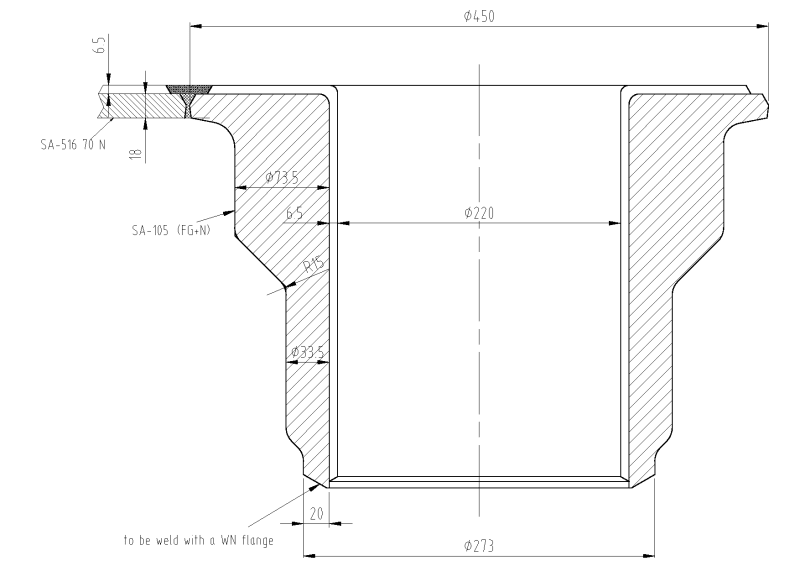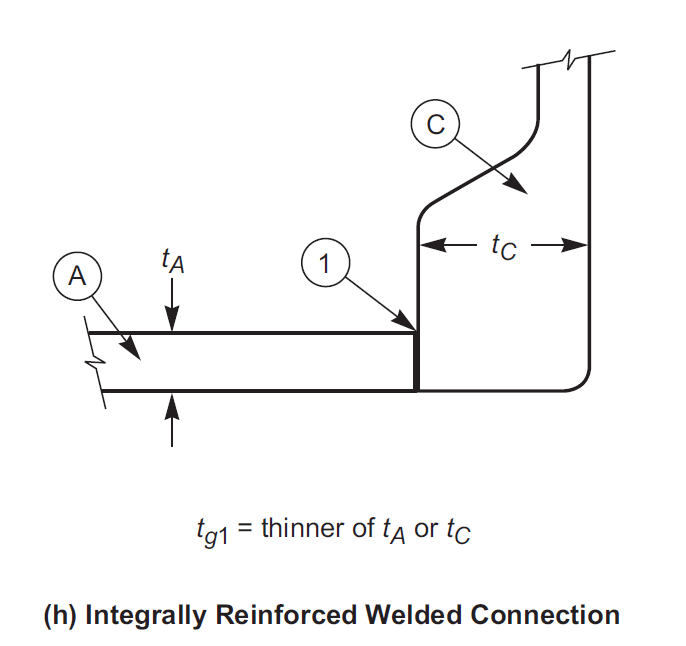hi all,
i am reviewing a calculation of the MDMT of the forged neck.
it's about how to determine the governing thickness.
it's a forged nozzle constructed of SA-105 produced to fine grain practice and normalized heat treatment.
it's butt welded to the shell constructed of SA-516 70N, which is illustred as following sketch:

i have some question as follows:
1. notes of figure UCS-66 indicates Curve B applies to "A/SA-105 forged flanges produced to fine grain practice and normalized, normalized and tempered, or quenched and tempered after".
it's specific to forged flange, what if it's a forged neck? not curve B?
2. what is the governing thickness of the forged neck in determining its MDMT? 18mm(thickness of neck-to-shell weld)? or 73.5mm(thickest portion of the neck), or 20mm(thickness of neck-to-flange weld)?
BTW, the interior thickness of 6.5mm is stainless steel cladding.
any comments appreciated.
i am reviewing a calculation of the MDMT of the forged neck.
it's about how to determine the governing thickness.
it's a forged nozzle constructed of SA-105 produced to fine grain practice and normalized heat treatment.
it's butt welded to the shell constructed of SA-516 70N, which is illustred as following sketch:

i have some question as follows:
1. notes of figure UCS-66 indicates Curve B applies to "A/SA-105 forged flanges produced to fine grain practice and normalized, normalized and tempered, or quenched and tempered after".
it's specific to forged flange, what if it's a forged neck? not curve B?
2. what is the governing thickness of the forged neck in determining its MDMT? 18mm(thickness of neck-to-shell weld)? or 73.5mm(thickest portion of the neck), or 20mm(thickness of neck-to-flange weld)?
BTW, the interior thickness of 6.5mm is stainless steel cladding.
any comments appreciated.

